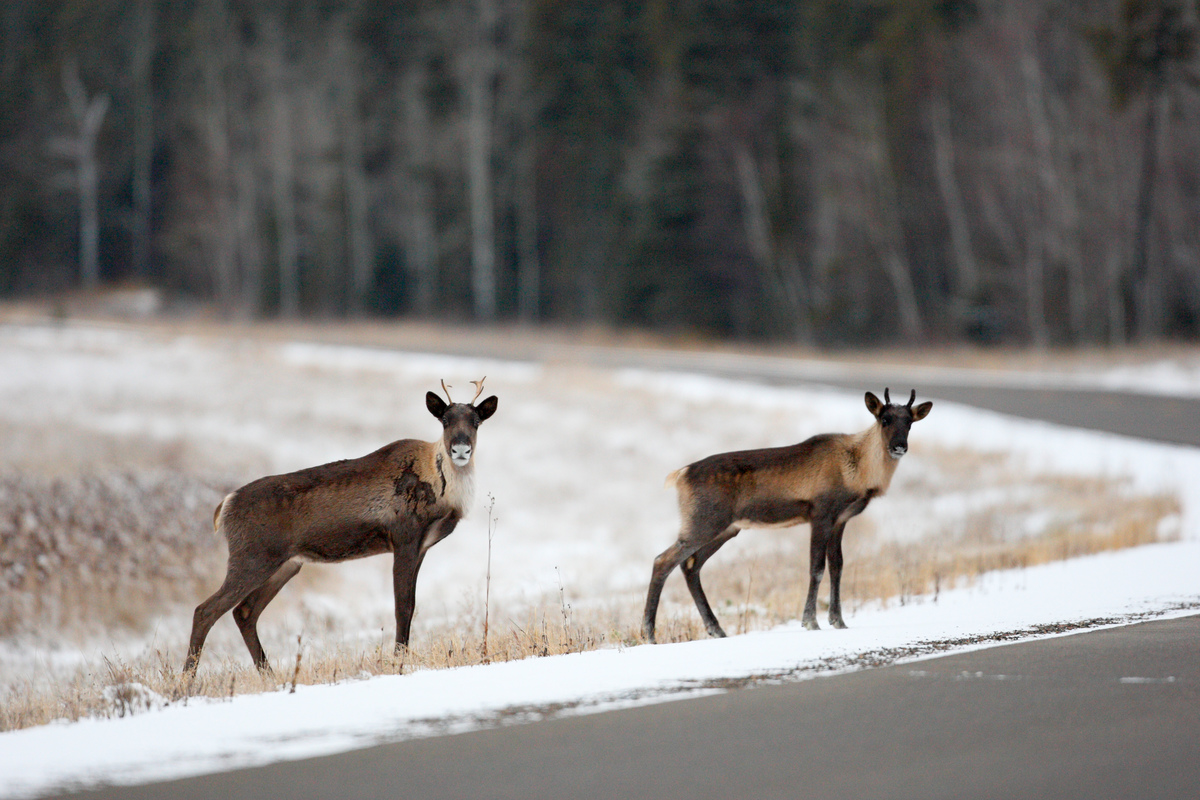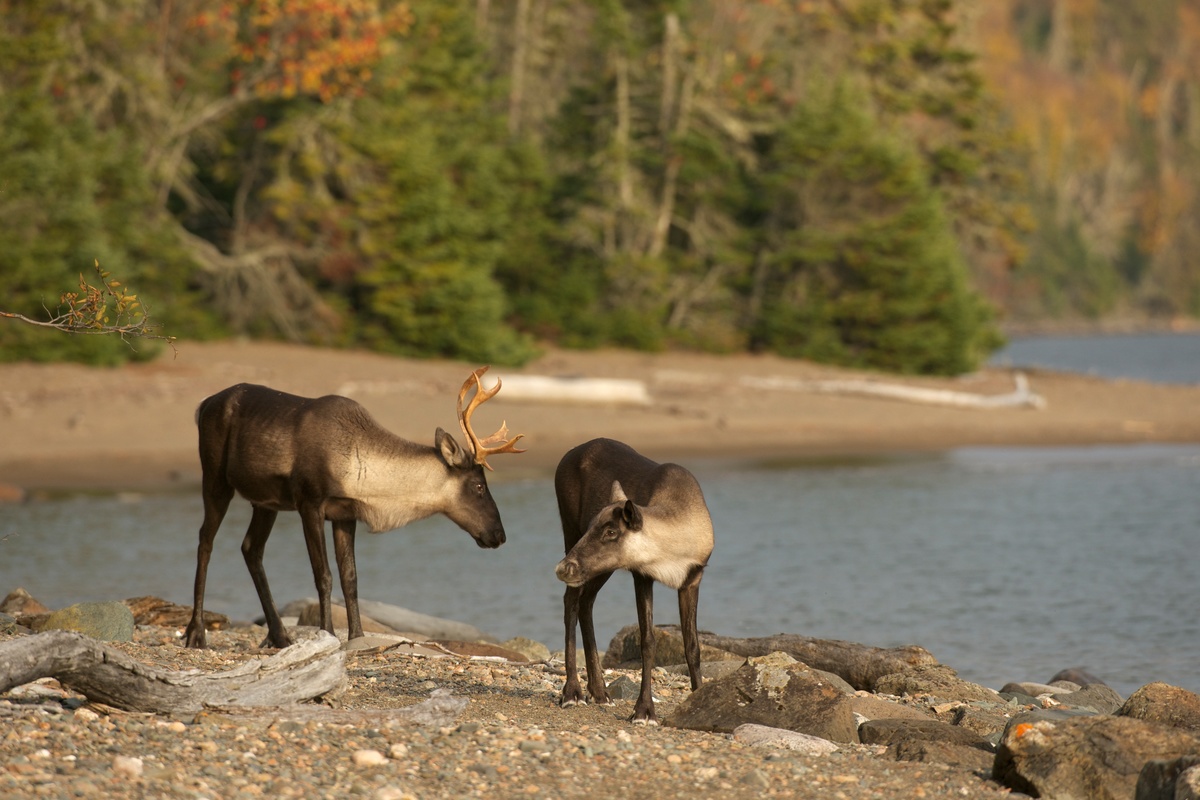In Canada, recent government decisions to address declining caribou populations are truly dumbfounding.

Woodland caribou crossing road in northern Manitoba.
We live in very odd times. We have politicians in powerful positions around the world who wish to take us back to the 1950s, or earlier, in terms of environmental and social policies.
We have governments rolling back hard-won environmental and social policies. And we have governments who use early twentieth-century resource management tactics to deal with species that are at risk of disappearing because their habitats are being destroyed at alarming rates.
Here in Canada, we have a crazy-making situation. Provincial governments in British Columbia and Quebec are stuck in the twentieth century in addressing the serious matter of declining caribou herds.
In British Columbia, the government encourages the killing of wolves who prey on southern mountain caribou as a means of dealing with that seriously declining herd. And in Quebec, the government is transporting the threatened Val-d’Or caribou herd to a zoo.
In both cases, governments are dealing with symptoms rather than causes. In both cases they are missing the forests for the trees — literally. Rather than deal with the root cause of caribou habitat destruction, which is a result of poor forest management and piecemeal conservation planning, these governments are sending these animals to zoos or killing off predators who play important roles in ecosystems.
The Quebec situation is especially problematic and unacceptable. Not only is this remaining herd being sent 400 kilometers away from its habitat into a zoo in order for it to be preserved, it sets a dangerous precedent for all endangered species in Quebec and in Canada.

Woodland caribou (Rangifer tarandus caribou) near Lake Superior, Slate Island, Ontario.
Both the Quebec government and Canada federal government have legal responsibilities to protect endangered species like caribou — under Quebec’s caribou recovery plan and the Species at Risk Act (SARA), respectively. Instead, sending this endangered herd to a zoo is an abdication of their responsibilities to protect this species in the wild. This also means abdicating their responsibility to protect what remains of caribou habitat and that of other threatened herds.
Protecting habitat is much harder to do — especially when industrial forestry and other extractive industries come calling, threatening to continue decimating what remains. So rather than make wise land use decisions that set aside enough range that protects threatened herds, British Columbia encourages the killing of wolves from helicopters. And in Quebec, this seems to mean sending wild caribou to zoos (which, past record has shown has led to disastrous consequences of wild caribou dying while in captivity).
Zoos are no places for wild caribou, and the tactic has no place in smart twenty-first century conservation planning. The disastrous fate of this herd and the disappearance of boreal forests that have sustained them for millennia must serve as a political wake-up call.
Although the Canadian government released the boreal woodland caribou recovery strategy under the Species at Risk Act (SARA) nearly five years ago, there has been very little concrete action. The strategy developed a threshold of risk for managing caribou and set guidelines to maintain or restore each caribou range. Similarly a joint Federal-BC study on the Southern Mountain Caribou identified significantly declining numbers — but followed with little concrete action.
The science behind SARA and such joint studies, coupled with Indigenous knowledge, needs to be urgently applied so that the sad demise of the Val D’or and Southern Mountain caribou herds need not happen, and is not repeated elsewhere in the country. The Quebec, British Columbia and Canadian Federal governments in particular, and other provincial and territorial governments in general, must act immediately. With input from First Nations communities, they must strengthen caribou recovery and habitat protection management.
Once habitat is destroyed or species reach a critical number, it is increasingly difficult to protect them. In the case of British Columbia — killing wolves, regardless of one’s ethical views on such a strategy, won’t save the caribou there. And certainly neither will sending wild caribou to a zoo.
These animals deserve better. The public deserves better. Future generations deserve better.
There are some things you can do. Aside from contacting the provincial governments of Quebec and British Columbia to question them on their outdated ways of thinking in protecting caribou, you can also sign our petition calling on the Canadian federal government to implement threatened caribou recovery strategies, including protecting their forest habitats. Let’s get those caribou recovery strategies in place and avoid twentieth century solutions that do not suit the world of the twenty-first century.
Eduardo Sousa is a senior forest campaigner at Greenpeace Canada.
A version of this blog was originally posted by Greenpeace Canada here.
